- Camping Tips
- Hiking Tips
- RV Camping
- Destinations
- Blog
- Gear Reviews
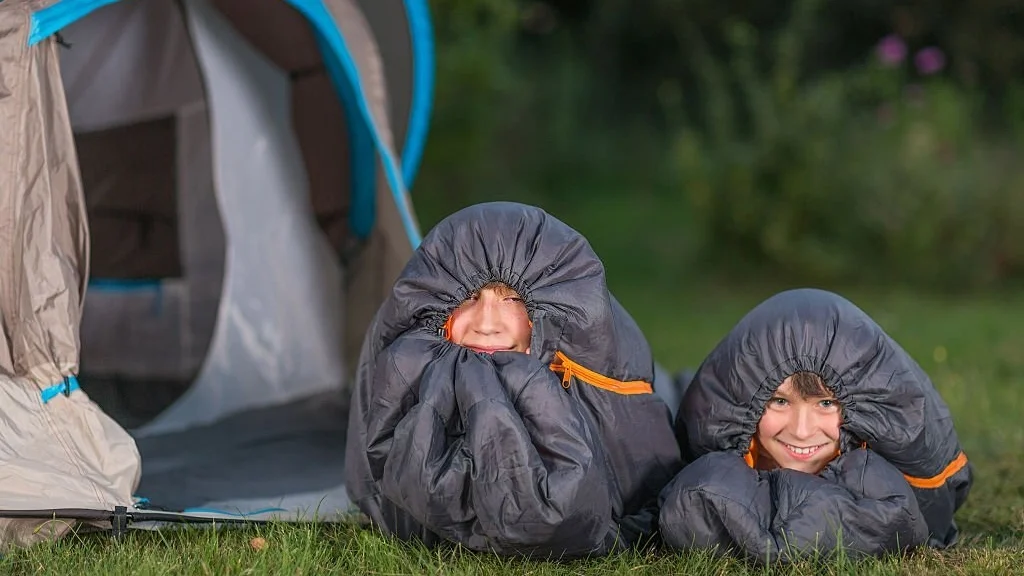
Away from your home’s HVAC system and comfy duvets, a night outdoors mostly means having to deal with frigid and erratic weather.
Sleeping bags are pretty much your main defense against the biting cold. Essentially, you want to use sleeping bags suited to the season. Highly insulative bags are perfect for winter and chilly nights while light and breathable ones perform well in summer conditions.
If your sleeping bag currently sleeps way colder than it used to, then there’s probably a lot you can do to improve it. Some of the methods you can use to make it warmer are simple and inexpensive while some require minor lifestyle changes on your part. Read on for more insight.
Related: The Best Sleeping Bags for Camping.
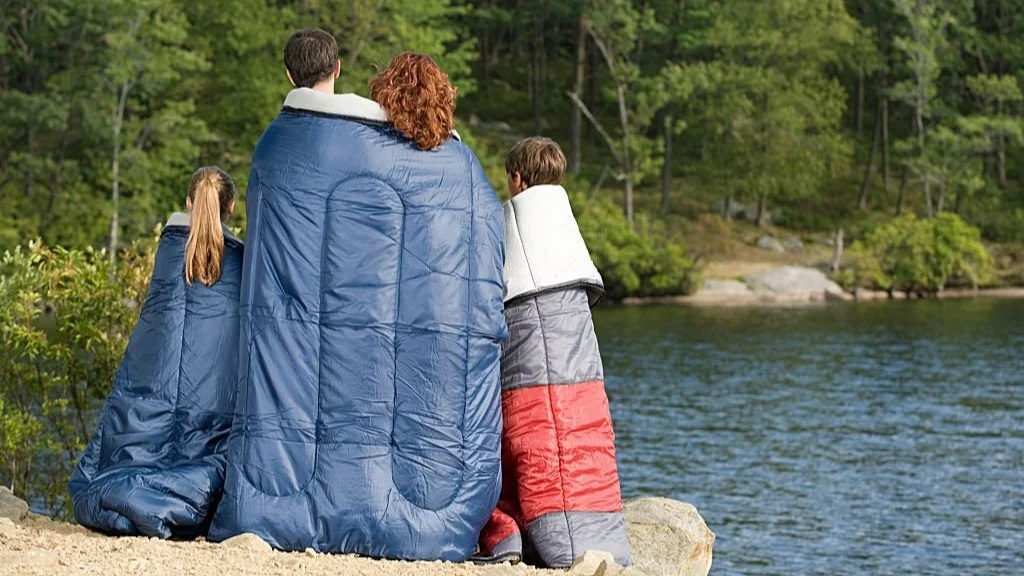
Sleeping bags mostly work by trapping air within their fill to act as insulation. If the fill starts clumping or gets compressed, then insulation takes a hit.
One of the most effective ways to make your sleeping bag warmer is to fluff it again. Break up any clumps you might feel within the bag’s fill. When you’re getting ready for bed, make sure to remove the sleeping bag from its sack and lay it out to help it regain its loft before rushing into it.
For sleeping bags with continuous baffles, try to spread the fill around to where it is needed most. Sleeping bags work more efficiently when they are fully closed so be sure to zip up the entire length of the bag.
Cinch the hood with the drawcord around your face to prevent losing heat through the upper part of the bag.
Most bags have a shoulder-and-neck baffle (draft collar) that helps to trap warm air and keep out cold air. Some might even come with an adjustable or elastic drawstring, or a piece of fabric to keep the baffle in place. You want to adjust this baffle system to snuggly fit around your neck and shoulder region to keep out the cold.
If your sleeping bag has too much room inside, you want to fill in the gaps with extra clothes or other gear so there is little room left to heat up. Other campers swear by wrapping the sleeping bag around them while sitting in the tent to help warm it up before sleeping in it.
Perspiration and respiration will ultimately affect the effectiveness of the bag in keeping you warm. Air it out every morning to help dry out any moisture present.
Over time, dirt, dried-in sweat, and body oils will start affecting the bag’s insulation ability. So, the next natural step is to wash your dirty sleeping bag to help it regain its loft and expel the grime. Always follow the manufacturer’s instructions when washing the bag to prevent damaging the fabric or waterproofing properties.
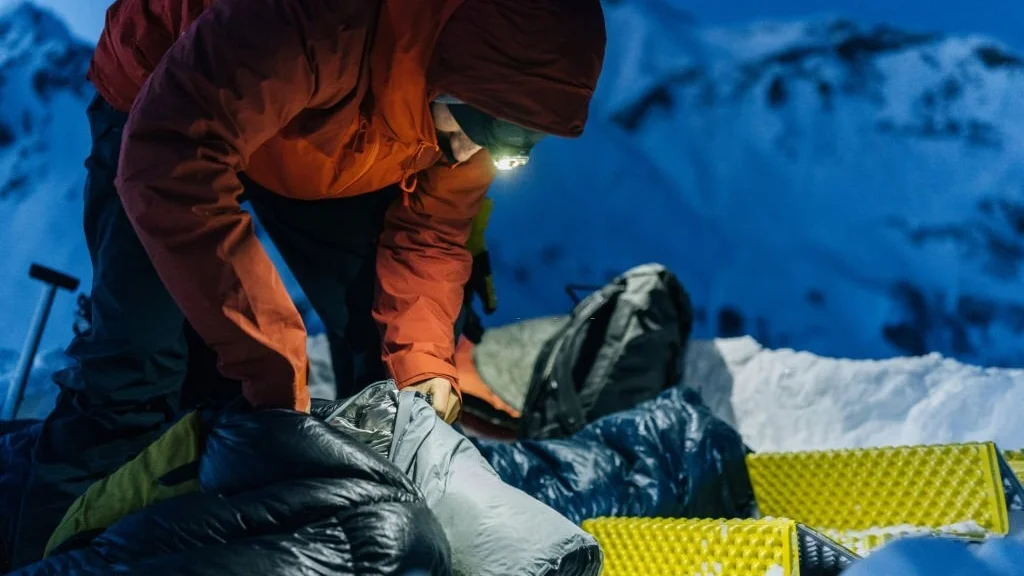
Sleeping bag liners go inside your sleeping bag to provide extra warmth, keep the bag clean, and help provide extra comfort. A good quality liner could easily add 5 to 10 degrees Fahrenheit of extra warmth to your sleeping bag.
The type of material used to make the liner highly influences its insulating abilities and comfort level. Expensive merino wool liners offer the best balance of weight, comfort, and warmth. Fleece and microfleece liners are typically very warm but heavy and bulky.
Silk sleeping bag liners can be very lightweight and well-loved for their superior comfort levels, quick-drying ability, and warmth. Liners made of cotton or polycotton are stronger, cheaper, and highly absorbent but can be a tad bit heavier than the rest.
If you don’t mind the extra weight and cost, you can go for sleeping bag liners made of insulated synthetics. Like your sleeping bag, these liners have a thin layer of insulation to help keep you warm.
Using a sleeping bag liner means you don’t have to wash the bag frequently since sweat, moisture, oils, and dirt are absorbed into the liner instead of into the sleeping bag. Further, some liners can protect you against insect bites and act as standalone sleeping options in warm weather. If you anticipate extreme cold, consider getting a vapor barrier liner for your sleeping bag.
Any moisture produced by the sleeper through respiration or perspiration processes is trapped inside the vapor barrier liner. As a result, the liner minimizes evaporative heat loss that would have occurred if the moisture permeated into the sleeping bag.
You may add a standard sleeping bag liner inside the VBL for higher effectiveness.
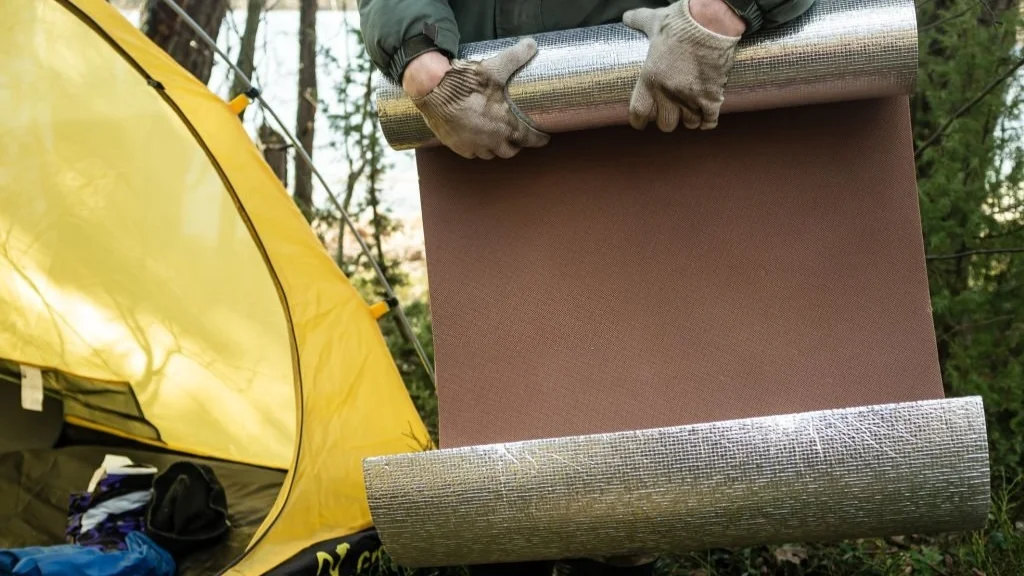
Another method to help you sleep warmer is to upgrade your sleeping platform. A full-length sleeping pad with a high R-value will be more than ideal to give you some extra degrees of warmth. You may even add an extra pad if you will be sleeping on frozen or snow-covered grounds.
A combo of a closed-cell foam pad and a self-inflating pad should be adequate at insulating you from the ground. Keep in mind that a high R-value translates to more insulation and that the insulation is cumulative.
You want to avoid airbeds at all costs as they do not perform too well in terms of providing insulation.
Beyond the sleeping pads, you may add a thick fleece blanket on top of the pads and underneath your sleeping bag. Emergency blankets might work too, but the resulting insulation is negligible as compared to other alternatives.
A tent carpet or rug may be used to improve ground insulation. In addition, spreading your extra clothes under your sleeping bag will provide a warmer and more comfortable sleeping system.
All these efforts might go to waste if your sleeping bag isn’t well secured on your sleeping platform. Use the included attachment points (sleeves or straps) on your sleeping bag or pad to hold them in place.
If your sleeping system lacks such systems, you may try putting your sleeping pad inside the bag for good measure.
Lastly, ensure you pitch your tent on a suitable site, preferably in an area sheltered from the wind. Spreading out a pile of dead leaves or pine needles before setting up your tent might also reduce heat loss to the ground. Complement your sleeping system’s insulation by properly insulating the rest of the tent.
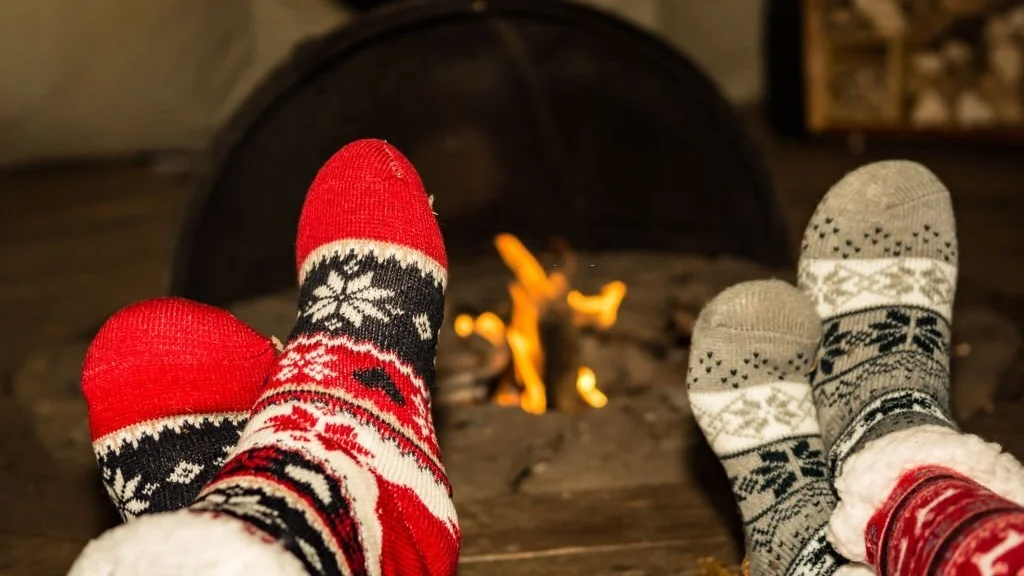
Layering up is the way to go when it comes to fighting the cold outdoors. For sleeping, you want to have dedicated clothes instead of your day-to-day clothes. Depending on the expected temperatures, your sleepwear should consist of at least two layers – a breathable, absorbent base layer, and a warm middle layer.
You don’t want to wear too many layers as that might lead to sweating, compression of your bag’s fill, or even make it harder for you to regulate your body temperature.
Fleece pajamas or long underwear might be enough for those chilly nights. Thermal underwear is a good alternative for your base layer as it traps air between the fabric and your skin hence improving the insulation.
While it is highly recommended that you wear very little to sleep, if you are still cold then adding another layer is the way to go. Consider getting wool clothing for your middle layer as the fabric offers great warmth and breathability even when wet.
A light puffy jacket in place of your other layers is recommended for cold sleepers.
Get yourself some warm headgear to help prevent cold around your neck and head. A warm knit hat or beanie that snugly fits over your head is a good starting point. However, these options can easily come off at night. Instead, you want to go for balaclavas to keep your head nice and toasty all night long.
Add a neck gaiter and your headgear is pretty much complete.
Experiencing cold feet? In colder temperatures, your body reacts by reducing blood flow to extremities such as the hands and legs. Instead, the priority is to keep your internal organs warm. As such, you will need some other means to keep your hands and legs warm.
Winter gloves will do just fine for your hands while some booties and/or socks will suffice for your feet.
Finally, ensure your sleepwear set is dry and preferably clean to get the most out of it. Damp clothing robs you of the much-needed warmth. Damp cotton clothing, especially, performs terribly with the slightest moisture.
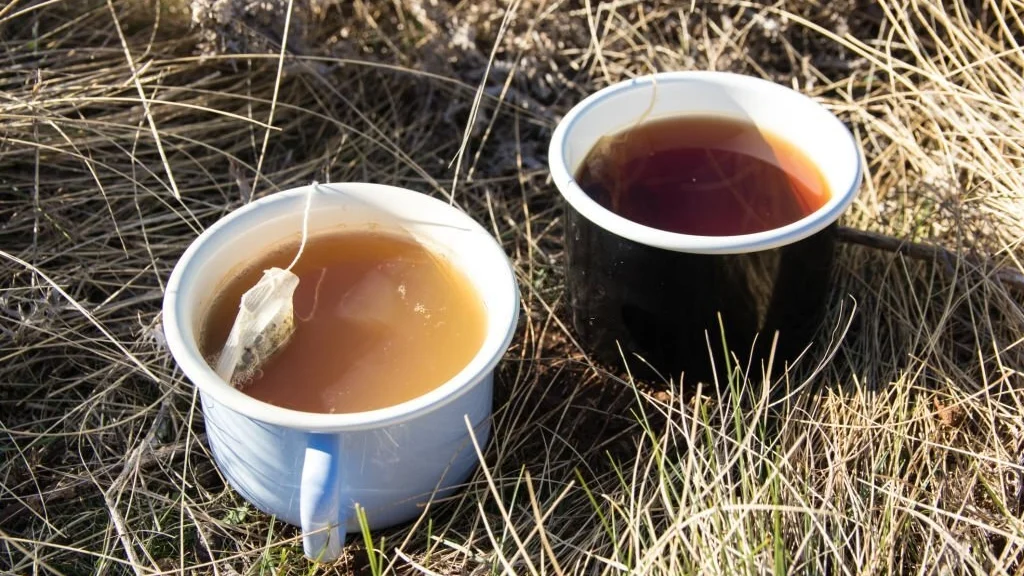
When food is being digested in your body, heat is continually released throughout the process. You want to eat high-calorie foods rich in carbohydrates or fats to help you generate heat during sleep. Hot beverages such as a mug of cocoa, chocolate, or peppermint tea will similarly warm you up fast.
However, don’t drink too much caffeine as that will only mean more peeing trips with each trip robbing you of substantial heat. For best results, consider caffeine-free alternatives but avoid alcohol completely as it messes up with your body’s perception of cold temperatures.
A quick midnight snack will do great at adding extra fuel to your body’s heat-generating processes. Candy bars, energy bars with whole grains, dark chocolate, and pecans are good options to go for.
Light exercises are highly recommended to get you warmed up before bed, but they should not be too intense to make you sweat. Try jumping jacks, pushups, sit-ups, shoveling snow, or a brisk walk around the campsite to get you warmed up.
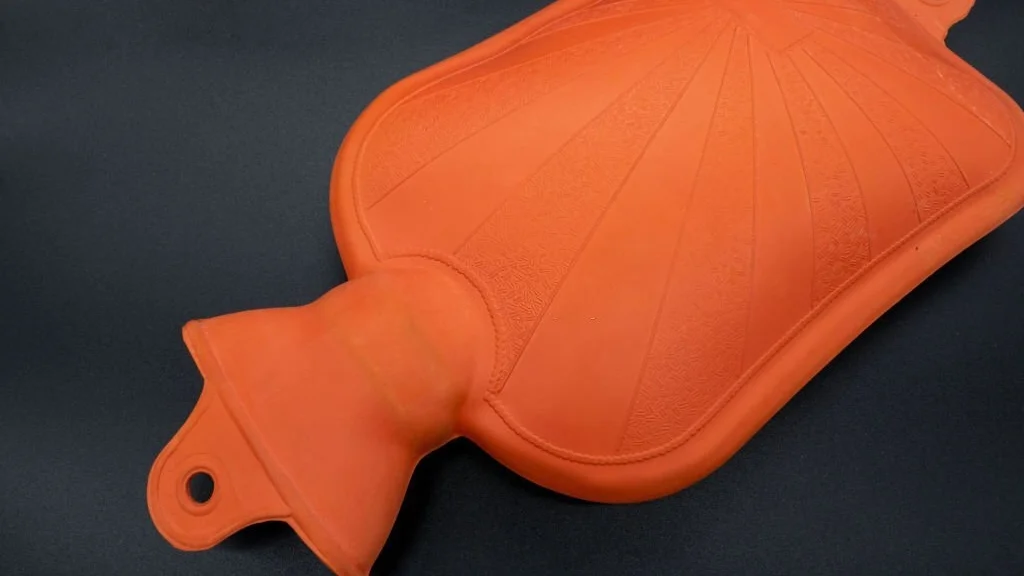
Fill up your Nalgene water bottle, stainless steel water bottle, or dedicated hot-water bottle with warm water. Ensure the bottle is tightly sealed and then slip it in a sock or wrap it with fleece to avoid burning yourself. Alternatively, you may insert it in a waterproof bag to catch any accidental spills or leaks.
Place the bottle in the footbox and start feeling the warmth.
Do not use any insulated or vacuum water bottles as they won’t release any heat into your bag.
Alternatively, you can use disposable heat packs or other chemical heating solutions to help you stay warmer in your sleeping bag. Just activate a few packs and toss them in the footbox of your bag and some in your pockets.
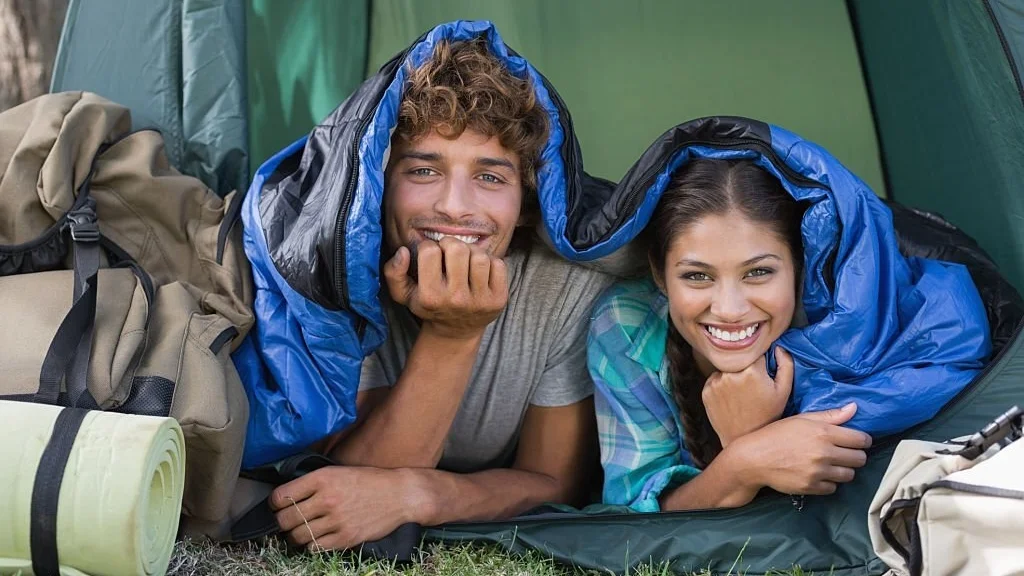
Just sharing a tent with someone helps make it slightly warmer to sleep in. Further, if your roommates are warm sleepers, opt for the middle sleeping spot and away from the potentially windward side of the tent.
Cuddling together with your partner is another good way to keep each other warm. It is made much easier if you have a sleeping bag that can easily be zipped up together with another or a double sleeping bag.
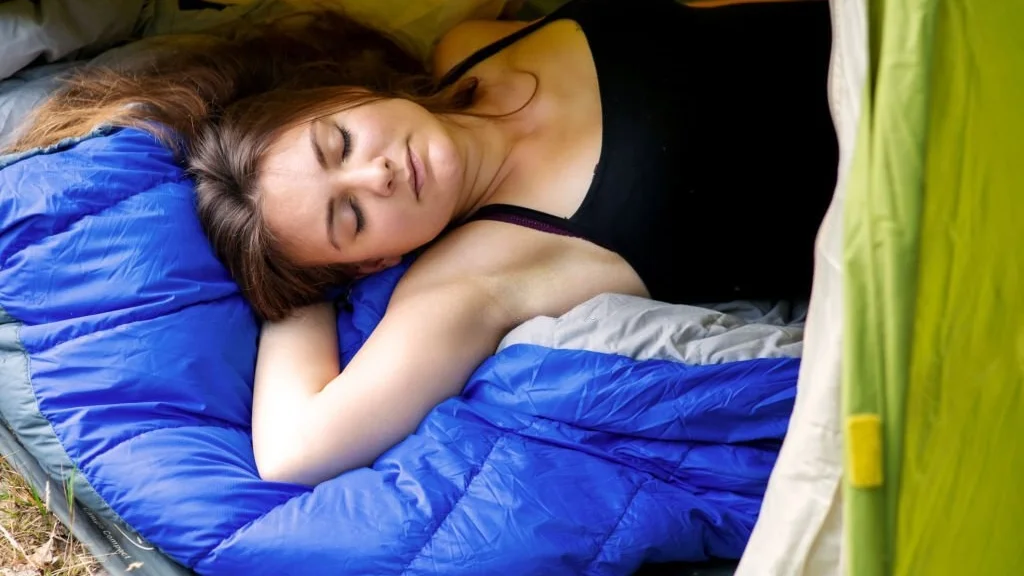
Pee before hitting the hay. This minimizes or eliminates the number of times you must wake up to answer nature calls. Plus, your body is constantly fighting to keep everything at the same temperature – including your pee – so having none is a good measure to keep warm.
Peeing twice before settling down for bed should be standard practice if you want to stay warm in your bag. We recommend peeing about half an hour before bed and immediately before snuggling up in your sleeping bag for the best results.
Wash up before going to bed, or just use wet wipes if a quick shower or bath is not possible. This helps minimize the amount of grime and sweat accumulated during the day from getting into the sleeping bag.
Try warming up by the campfire before heading to bed but be careful of smoke smells.
If nothing seems to be working out, then it is probably time to bite the bullet and go down the expensive route. Consider getting a new, more insulative, and snugly-fitting sleeping bag with a higher temperature rating.
Get yourself a smaller camping tent to reduce the empty space inside. Portable heaters and other measures to warm up and insulate your tent are also worth the shot.
Lastly, RV camping and car camping might be worthy alternatives as you won’t have to rely too much on your sleeping bag for warmth.
Shivering through the night in your sleeping bag is no fun.
All those beautiful night sounds of the breeze whipping around your tent, crickets chirping, frogs croaking, leaves rustling, owls hooting, or animals howling in the distance go unappreciated if you’re constantly curling up and quivering in cold. Plus, you won’t get the much-needed rest to face the following day.
Feel free to put a spin on either of the tips we’ve shared above to meet your specific needs. Remember, too much heat isn’t the goal here. Instead, you want to sleep at just the right temperature – not too hot and not too cold.
Charlie Leone
Website Owner/Editor
Welcome to CampingManiacs